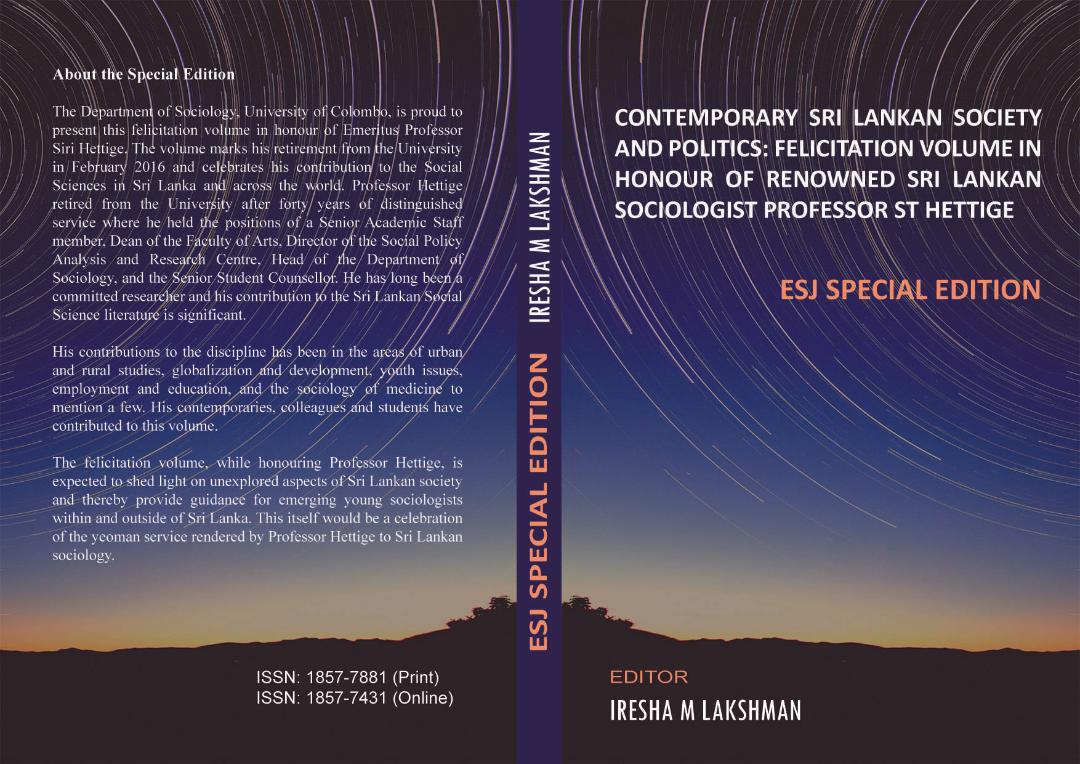Youth and Youth’s Religiosity in Sri Lanka
Abstract
Sri Lankan youth and youth religiosity has indicated that youth as being hopeless and revolutionary, but this study shows that it is not always through when one closely looks at the everyday life of youth in a more ethnographical sense. The ethnographical accounts that researcher has presented; indicates the way young people behave, contest, and negotiate in the context of a sacred site as well as how youth assimilate and transform their religious heritage quite different even though they proclaim their affinity with religion. Youth pilgrims come to Sri Pada to worship and to ask for help. No doubt many youths do go to Sri Pāda for more than worshipping the sacred footprint and the deity, or than seeking favour from its divine powers for their worries and frustration. This paper explained their ‘sacred’ intentions are combined with the achievement of maximum pleasure. Both the pleasurable and the religious dimensions of these specific pilgrim groups were explored through the accounts of personal experiences (e.g., through case studies and memories of pilgrims). These youth pilgrims visit Sri Pada with different motivations and intentions, both ‘religious’ and ‘secular’. The interconnecting of both sacred and secular aspects of Sri Lankan youth have not been considered when they were identified as a sociological category and this paper is suggested to overcome that conceptual inadequacy of youth research in Sri Lanka.
Downloads
Metrics
PlumX Statistics
Copyright (c) 2020 Premakumara de Silva

This work is licensed under a Creative Commons Attribution-NonCommercial-NoDerivatives 4.0 International License.








